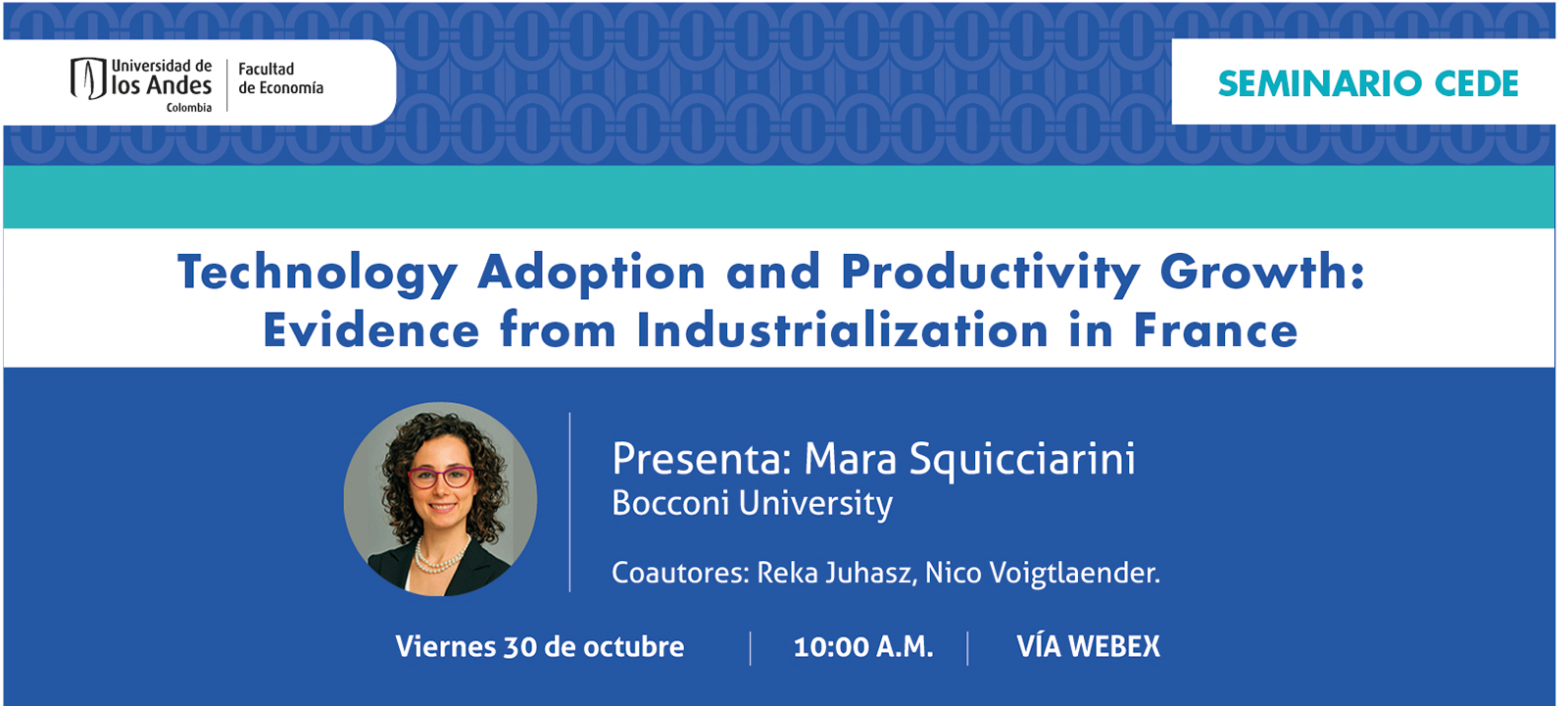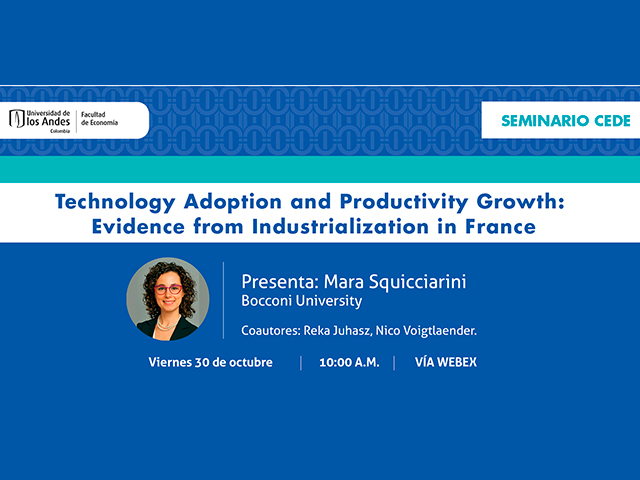Seminario CEDE - Mara Squicciarini

We construct a novel dataset to examine the process of technology adoption during a period of rapid technological change: The diffusion of mechanized cotton spinning during the Industrial Revolution in France. We document several stylized facts that can explain the well-documented puzzle that major technological breakthroughs tend to be adopted slowly and – even after being adopted – take time to be reflected in higher aggregate productivity. Before mechanization, cotton spinning was performed in households, while production in plants only emerged with the new technology around 1800. This allows us to isolate the plant productivity distribution of new technology adopters in mechanized cotton spinning and to show that this distribution was initially highly dispersed. Over the subsequent decades, cotton spinning experienced dramatic productivity growth that was almost entirely driven by a disappearance of plants in the lower tail. In contrast, innovations in other sectors (with gradual technological progress) shifted the whole productivity distribution. We document rich historical and empirical evidence suggesting that the pattern in cotton spinning was driven by the need to re-organize production under the new technology. This process of ‘trial and error’ led to widely dispersed initial productivity draws, low initial average productivity, and – in the subsequent decades – to high productivity growth as new entrants adopted improved methods of production and organization.

